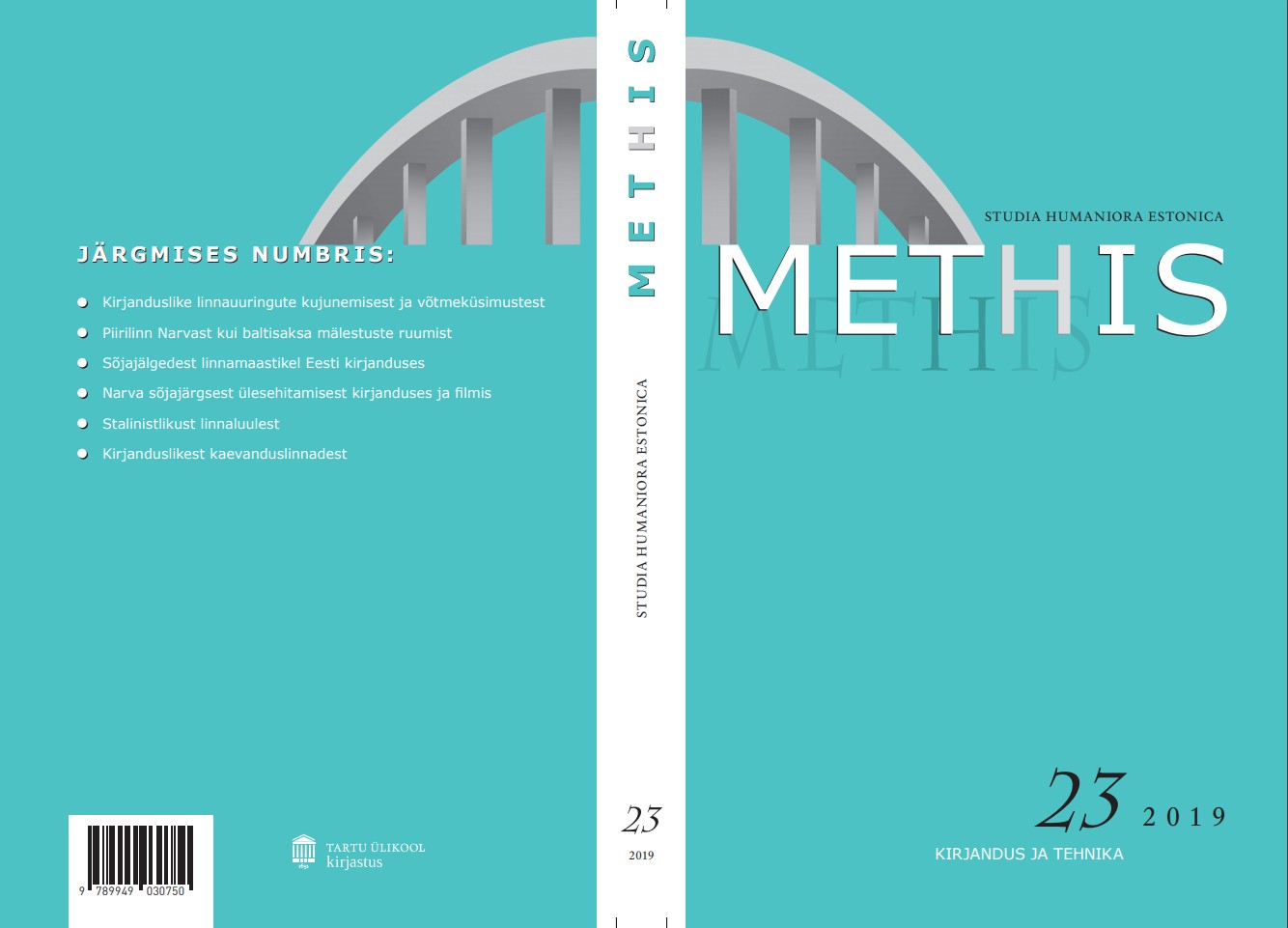Küberpunk ilma teadusulmeta / Cyberpunk without Science Fiction
DOI:
https://doi.org/10.7592/methis.v18i23.14802Keywords:
küberpunk, realism, teadusulme, tehnoloogia, cyberpunk, realism science fiction, technologyAbstract
Artikkel lähtub hüpoteesist, et mida tehnilisemaks muutub nüüdisaegne globaliseerunud kultuuriruum, seda teadusulmelisemaks muutub realism, mis püüab seda kultuuriruumi usutavalt peegeldada. Selle hüpoteesi taustal vaatleb artikkel nii poeetilisest kui ka kultuuriteoreetilisest aspektist realismi ja teadusulme otsustavat lähenemist nüüdisaegses žanrisüsteemis ning käsitleb sellest lähtuvalt küberpunkulme nüüdisaegset s(t)aatust realistliku praktikana. Artikkel määratleb ja sisustab teadusulmeta küberpungi mõiste ning vaatleb selle eri avaldumisvorme kirjanduses, filmis, teleseriaalides ja popkultuuri nähtustes.
My article follows the premise that as the contemporary late-capitalist cultural environment becomes increasingly technological, its literary realism, aspiring towards a plausible encompassing reflection of this environment, becomes increasingly science-fictional. In other words, technological development, together with an increasingly accelerating pace of change, has also brought about changes in the way we perceive the contemporary genre system, and specifically the relative positions of realism and science fiction therein.
From this perspective, the article focuses on the present fate of cyberpunk, a prominent subset of science fiction in the 80s and 90s, whose main topics of reflection were the influence of the emerging virtual technologies, the increasing technological supplementations to the body, and their impact to (post)modern subjectivity. The article fleshes out the historical emergence of a new generic phenomenon that Sherryl Vint has tentatively called non-SF cyberpunk, or, cyberpunk without science fiction. This new phenomenon can be characterized as a fully realist practice that nevertheless maintains the science-fictional “feel” of cyberpunk’s earlier, classic incarnation. In my article, I exemplify the emergence of non-SF cyberpunk in various works of fiction, film, TV-series, and pop-cultural phenomena.
During the first years of the 21st century, history – or more precisely technological development – finally seemed to have caught up with cyberpunk. The various technological phenomena and processes the cyberpunk readers and watchers were used to while devouring fiction increasingly started to pop up in everyday reality. Virtual communication technologies, digital networking and the emerging social media platforms; advances in genetic engineering and increasingly common prosthetic supplementations to the body; the mediated intimacy of historical events and the eventual emergence of cyber-war; as well as the overall onslaught of the society of the spectacle and the virtualization of finance capital – all of these, in whatever particular shape or form they happened to take historically, became more evident, more strongly felt in quotidian late-capitalist reality. In a way, several of cyberpunk's central speculative elements seemed to have “bled” straight from fiction into the everyday.
More important than the manifold materializations of cyberpunk's particular thematic elements, though, was the sheer speed and intensity of overall techno-scientific developments that brought them about, and the corresponding over-accelerated pace of cultural change felt in common everyday life. All of a sudden, change, as the now well-known saying has it, seemed to have been the only constant of contemporary globalized existence. And this, in turn, posed some novel imaginative and representational problems to SF in general and cyberpunk (as its most immediately extrapolative sub-genre at the time) in particular. Since the specific tropes and thematic motifs that seem to have “bled from fiction into reality” are ones that feature most centrally in the repertoire of cyberpunk, it would be fair to claim that of all the subgenres of SF, cyberpunk is the one most directly involved in the current close feedback-loop between realism and SF.
I claim that cyberpunk has by now realized itself to such an extent that, to borrow a very attentive remark from Sherryl Vint, it would be more useful to see cyberpunk less as a subgenre of science fiction and more as part of the cultural milieu that informs our contemporary existence of technologically mediated reality. Vint develops this notion on Thomas Foster's claim that (probably sometime during the 80s and 90s) cyberpunk experienced a sea change into a more generalized cultural formation. Vint’s “non-SF cyberpunk” is a generic concept for contemporary works that convey precisely this cultural formation.
My article develops this notion of non-SF cyberpunk a little bit further. It has two aims: (1) to demonstrate, on the basis of Gibson's prose in Blue Ant trilogy, that there is a solid common ground between the poetics of realism and SF which ultimately enables the emergence of non-SF cyberpunk; and (2) to map several more recent works of literature, film and TV that, each in their own specific way, can be read as non-SF cyberpunk.


